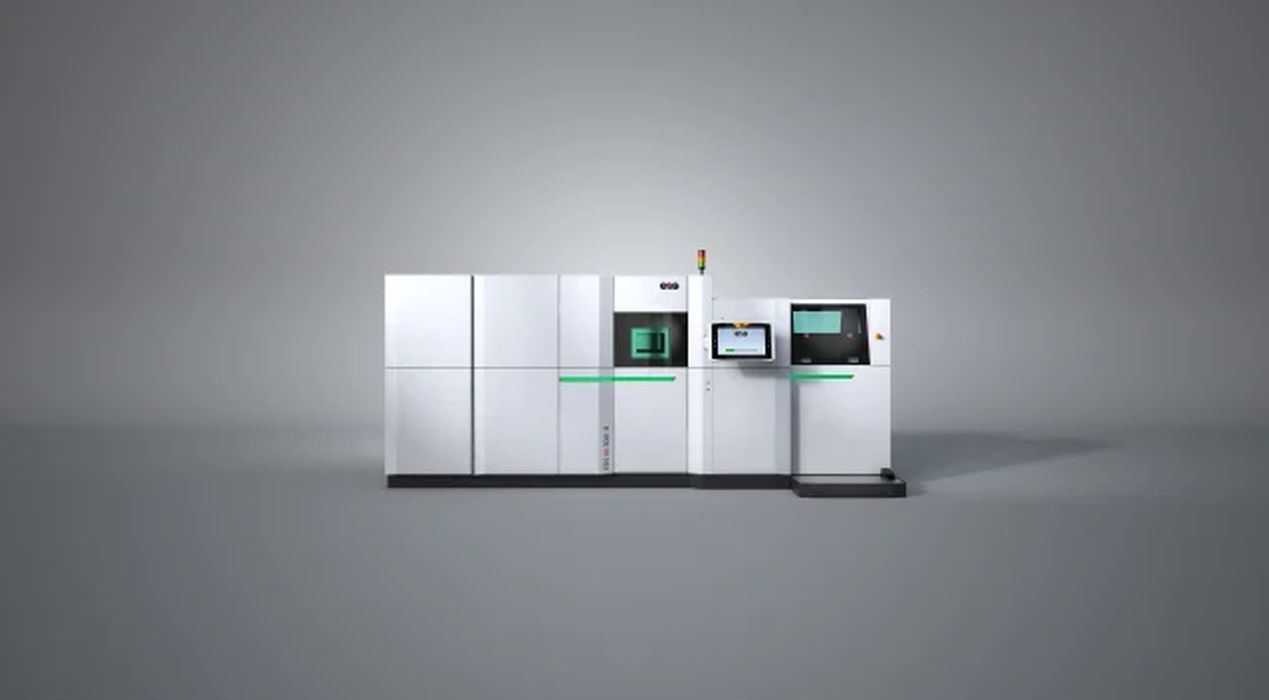
i3DMFG CEO shares insights on what it takes to succeed as a manufacturer in metal 3D printing.
On an unassuming road not far from the municipal airport in the city of Redmond, Oregon lies possibly one of the most advanced machine shops on the U.S. West Coast. Founded in 2013, i3DMFG specializes in metal additive manufacturing, 3D printing everything from aerospace parts to components for medical devices. It’s an EOS shop, equipped with more with more than a dozen metal 3D printers. Beside the EOS machines, i3DMFG also has a wire electrical discharge machine (EDM) and a CNC lathe with a robotic arm for post-processing.
Although many machine shops that start out with subtractive manufacturing eventually expand into additive, i3DMFG was focused on 3D printing from its inception. “We intentionally didn’t put CNC machine capabilities in-house until the demand for it was undeniable,” says CEO Erin Stone. “We wanted to stay focused on being experts in metal additive and we’ve been production-oriented throughout; we were never interested in being a prototype shop.”
The original plan was to start with molds and toolmaking, but a contract with Jeff Bezos’ Blue Origin in the early days of the private space race pushed the company into aerospace applications. “Blue Origin didn’t have any additive capabilities at that time,” explains Stone, “but SpaceX did, so they used us as their additive arm. That was our entry into the marketplace, which was like drinking from a fire hydrant.”
The Advantages and Disadvantages of Being an Additive Shop
Unlike the private space race, i3DMFG’s founding was based on a sensible rationale and concern for improving others’ quality of life. Prior to starting the business, Stone was in project management, helping clients leverage other companies’ excess manufacturing capacities. From that perspective, she could see the emerging demand for metal additive manufacturing and elected to use that to help improve her corner of the country: “We decided to focus on metal, and the mission statement of our company was to build family-wage jobs through manufacturing in the Northwest.”
The decision paid off, with i3DMFG cultivating a unique set of capabilities and expertise that has enabled it to take on very complex jobs. It also helps to be able to offer more metal options than your average machine shop. “We run between 16 and 17 stocked metals and we’ve had open-parameter licenses on all of our EOS machines the entire time,” says Stone, “so we’ve been able to stay ahead of the market.”
Of course, starting out as an exclusively additive shop was not without its drawbacks. Stone admits that the focus on additive may have initially put i3DMFG behind some of its competitors, which could buoy their sales with more straightforward precision machining jobs. Today, the shop makes additive parts for aerospace and defense, for non-invasive medical devices and even for high-performance bicycling. “There are some other arenas that are coming up quickly,” says Stone, “and we plan to be part of them.”
Additive and Subtractive Manufacturing Under One Roof
Despite i3DMFG’s commitment to additive manufacturing, Stone recognizes that AM is not a replacement for precision machining, especially when most additive parts require at least some post-processing. Although any traditionally machined part could be redesigned to be 3D printed, in many cases there’s no clear benefit to doing so. Nevertheless, there are instances where AM is the more cost-effective option.
“Occasionally, it makes sense with certain kinds of metals that are very expensive, because you’re not scrapping 50-70 percent of it on the floor,” explains Stone. “But, really, the sweet spot is complex geometries with organic shapes or other changes you can make to optimize the part.”
So, if you’re a traditional machine shop, it makes more sense to think of additive as expanding your capabilities rather than replacing your existing offerings. Indeed, a shop’s existing subtractive capabilities can actually augment newly added 3D printers by enabling it to offer turnkey solutions to customers: parts 3D-printed and post-processed all in one place.
Read the rest of this story at ENGINEERING.com
